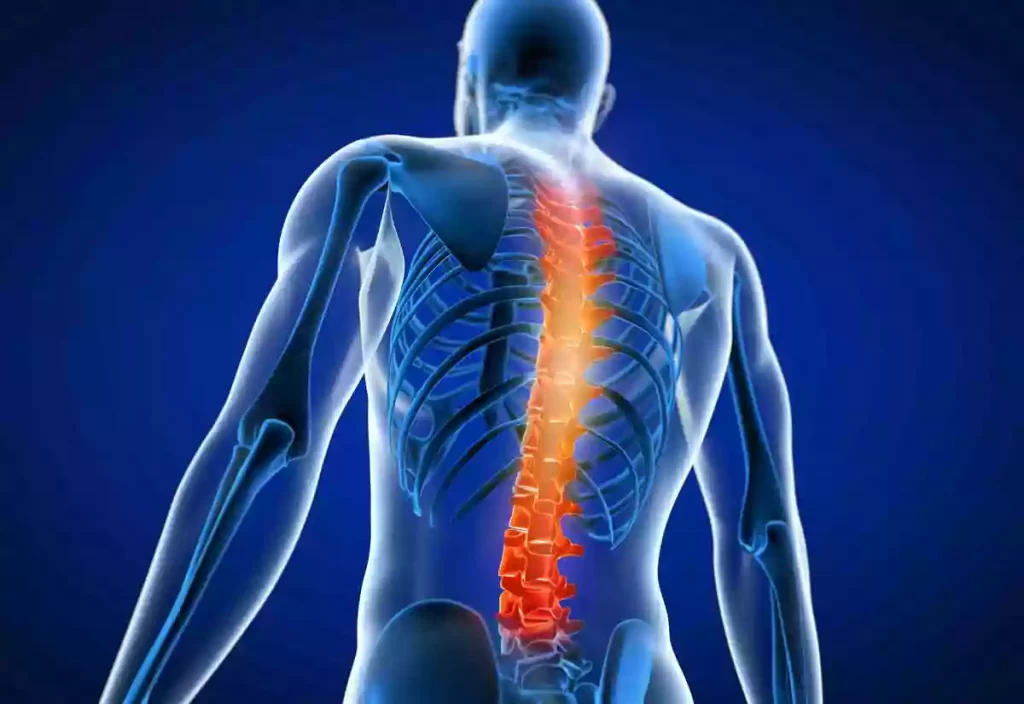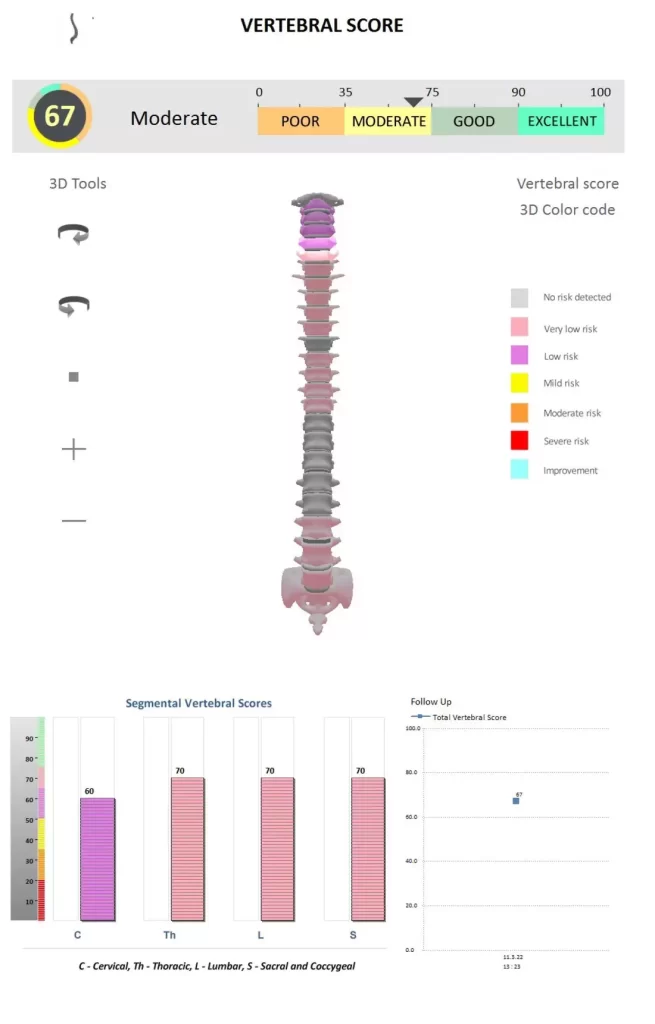
Vertebral Score By Ai Doctor
The Ai Doctor’s full body scan can see the spine’s health through the vertebral score. This is important because these different areas of the spine innervate (or energize through a nerve) specific sections of the body. On top of that, the spine’s nerve impulses also control the organs. Because of these critical components of the spine, the vertebral score is even more important to have.
With the professionals able to visually see their client’s vertebrae and the points of misalignment or trauma, they can make better recommendations for healing. And, because the vertebral score can be seen by clients, they can also better understand why suggested interventions are necessary.
About the Spine
The spine is a structure of bones and muscles. The spine has 24 vertebrae or bones stacked on top of each other. The bones go from the skull down to the pelvis. In between the vertebrae are discs that support the weight of the spine. When considering where to look for health risks, most people only think about the main organs–the heart, lungs, kidneys, liver, and so on, but not many think of the spine. However, the spine is what supports the whole body and also plays a huge role in the central nervous system. One of the vital roles it plays other than structure and movement is protecting our spinal cord and nerve roots.
The spine is the nervous system’s messaging pathway to transmit sensory information. This sensory information includes feelings of cold, warmth, pressure, etc. However, this trauma to the spine also means trauma to movement and sensations. This is why looking at the vertebral score can bring insight into the status of the rest of the body. The Ai Doctor’s full body scan and vertebral score can show a complete picture of the spine’s health in a 3D image. If our spine is not in good health, we cannot perform daily tasks. The vertebral score will reflect these imbalances.
How Do I Maintain a Healthy Spine?

When Working and Lifting
The Ai Doctor health scan’s vertebral score can reduce the risk of worsening spine issues. This is because the vertebral score will highlight high-risk areas for immediate intervention. Professionals can then use this data to identify what lifestyle actions can be causing the risk. Some may be intense heavy lifting from work, while others can be due to an accident.
For those whose work involves heavy lifting and movement, making sure to use proper techniques such as keeping loads close to the body and bending the knees to lift are key. Avoiding loads that are TOO heavy are also an easy way to prevent injury. Another tip is to adjust the workspace dynamics. Sitting in a desk all day can also wreak havoc on the spine. Having ergonomic chairs and desk setups can help alleviate these risks. Even morning stretched before work can help ease tensions that the spine can carry.
When Sleeping
Sleeping also has a significant impact on back health. Most people tend to sleep on their side or stomach. Sleeping on your back and face up is the best for your spinal health. Train yourself to do this by keeping a pillow between your legs. If you must sleep on your side, have a pillow that goes from your shoulder to the top of your head, enabling the neck not to bend. The vertebral test score will be able to pick up where there is poor circulation which may have to do with sleep habits. Other tips include exercising regularly, which will increase the flexibility of your back. Walking or swimming are great ways to increase flexibility and keep weight down.
The Assessment
The Ai Doctor’s full body scan and vertebral score show the vertebral columns. The color key indicates that gray is no risk detected, pink is a very low risk, purple is a low risk, yellow is a mild risk, orange is a moderate risk, red is a severe risk, and blue is an improvement that needs to happen.
The vertebral score segments into four areas: C for Cervical, Th for Thoracic, L for lumbar, and S for Sacral (bone before the pelvis) and Coccygeal (tailbone). Each area scores from 0 to 100, with 0 representing severe risk and 100 representing no risk.
Looking at this user’s score, their Cervical (upper spine), Lumbar (lower spine), and Sacral and Coccygeal (pelvic area and tail bone) are considered very low risk. This can be seen with the light pink highlight. The thoracic (mid-spine), however, has a little more risk. This area is highlighted in magenta.
Aftercare and Follow-Up
A chiropractic adjustment or consistent stretching can help these low-risk areas. The user is most likely feeling inflammation, tightening, or tension in these areas. The score may improve after continuous adjustments as the body can become more flexible. The Ai Doctor health scan and the vertebral score are vital to help with nerve function and flexibility, especially as we age.
Encourage clients to get their Ai Doctor health scan regularly to determine whether interventions work. The Follow-Up section of the vertebral score shows the client’s spinal health progress. More data points for the client’s Total Vertebral Score can be seen when multiple readings are taken. This is a great visual for the client to see the trajectory of their lifestyle changes, giving them more encouragement towards caring for their overall health.